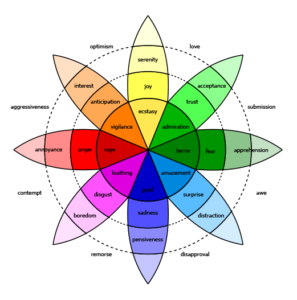By Dr. Lorea Martinez
Pablo is hiding in the bathroom. He doesn’t want to go to school. Since school started, his best friend has started playing with other kids, and he feels left out. Yesterday, he spent lunch all by himself. He did not tell his Mom, because he did not want to worry her. He is determined he is not going back to class today.
Pablo’s Mom is feeling irritated. She has an important meeting at work, and they are already late for school. On top of that, she was supposed to bring bagels for the school’s Welcome Breakfast, but forgot to buy them last night. Now, they will have to stop by the store before getting to school. That is if she can get Pablo out of the bathroom! She yells from the kitchen: “¿Qué estas haciendo ahí dentro? Vamos a llegar tarde, niño! Let’s go, Pablo!”
Does this story sound familiar?
Children often have a difficult time expressing and understanding their emotions. They may react to them by avoiding the situation, like Pablo did, or by yelling, pushing or misbehaving in some way. When we experience “big” emotions (such as fear, worry or anger), we cannot think clearly or make good decisions. If Pablo makes it to school, he will probably have a hard time focusing in class, while Pablo’s Mom may carry her frustration to her meeting. Emotions drive our behavior.
Being able to name and express emotions is an important social and emotional skill for children, youth and adults. Emotions provide valuable data about what is happening inside ourselves and the world around us. We don’t want to ignore or suppress our emotions; quite the opposite, we want to name and interpret our feelings, so we can better manage them. There is nothing wrong with having emotions, it is part of being human! The key is using our emotions to make better decisions.
As a parent, you can help your children develop their ability to express emotions by:
- Helping your child notice where they feel emotions in their body. Do they have a knot in the stomach when nervous? Does their throat get tight when scared? Do they blush when embarrassed?
- Building your child’s emotional vocabulary. Help your child use different words to express emotions. Many children only use sad, mad or happy, but there are many more words to describe emotions. Print this wheel of emotions and place it on your fridge.

Click here to download PDF Document - Having regular conversations about feelings. During dinner, ask your children to share their feelings about different events: How did you feel during soccer practice today? How do you think your sister felt this morning when she fell? And model by sharing about your emotions too. “I felt disappointed at work, because we missed the deadline for the project. I thought we were going to make it.”
- No judgment. Parents sometimes try to avoid children having difficult emotions. We may downplay what they feel: “Don’t feel sad. It’s not a big deal. We can buy another one…”, but these feelings are real to them. A better way to support them is by validating their emotions, whatever that may be, without judgment. “I see you are feeling scared about the gymnastics competition. It is normal to feel nervous before a big event.”
Parents and families are critical in helping children and youth develop social and emotional skills, so they can become successful, contributing and healthy adults. When you share your feelings and help your children name their emotions, you are supporting their social and emotional growth. This process is called Social Emotional Learning or SEL, and it will be the focus of a series of articles at HITN Learning. Stay tuned for more tips and tools to grow healthy hearts in your family!



